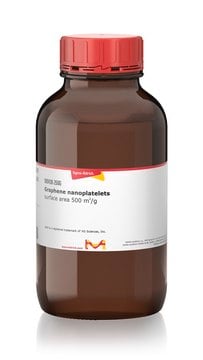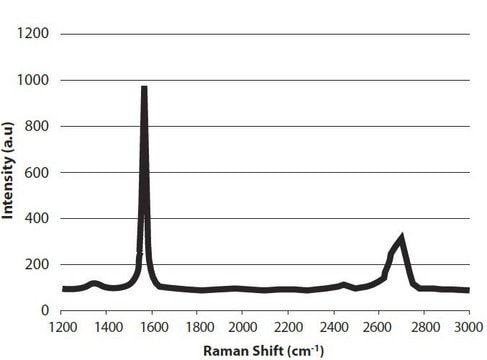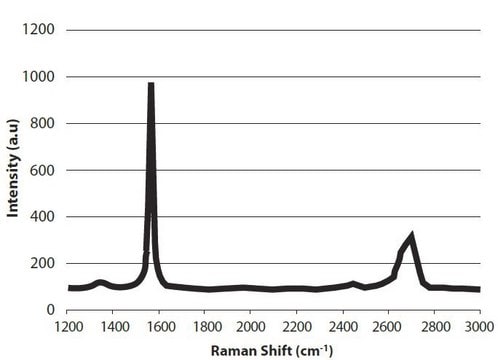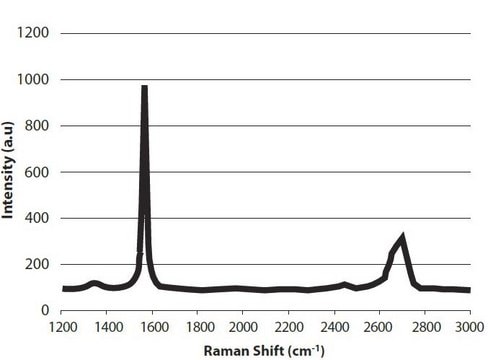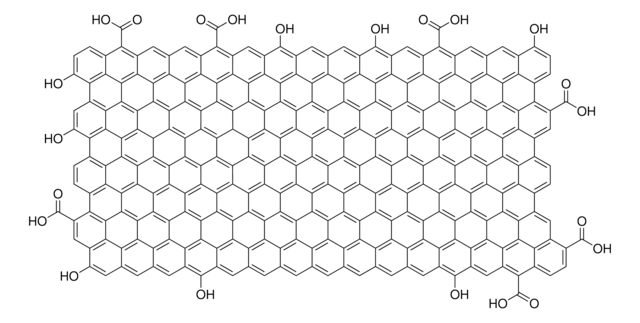This product is not tested for suitability in any specific applications. As listed in the 'DESCRIPTION' section, under Application, graphene nanoplatelets are often utilized in the following:
Ultracapacitor electrodes
Anode materials for lithium-ion batteries
Conductive additive for battery electrodes
Electrically conductive inks
Thermally conductive films and coatings
Additive for lightweight composites
Films or coatings for EMI shielding
Substrate for chemical and biochemical sensors
Barrier material for packaging
Additive for super-strong concrete
Additive for metal-matrix composites
Select a Size
About This Item
Recommended Products
description
residual acid content: < 0.5 wt%
Quality Level
form
powder
composition
oxygen content, <1%
surface area
120-150 m2/g
thickness
6-8 nm , average
particle size
25 μm
bulk density
0.03‑0.1 g/cm3
SMILES string
[C]
InChI
1S/C
InChI key
OKTJSMMVPCPJKN-UHFFFAOYSA-N
Looking for similar products? Visit Product Comparison Guide
Related Categories
General description
- xGnP® graphene nanoplatelets are unique nanoparticles consisting of short stacks of graphene sheets having a platelet shape.
- The unique size and platelet morphology of xGnP® graphene nanoplatelets makes these particles especially effective at providing barrier properties, while their pure graphitic composition makes them excellent electrical and thermal conductors. xGnP® graphene nanoplatelets can improve mechanical properties such as stiffness, strength, and surface hardness of the matrix material.
- xGnP® graphene nanoplatelets are compatible with almost all polymers, and can be an active ingredient in inks or coatings as well as an excellent additive to plastics of all types. The unique manufacturing processes are non-oxidizing, so material has a pristine graphitic surface of sp2 carbon molecules that makes it especially suitable for applications requiring high electrical or thermal conductivity.
- Grade M particles have an average thickness of approximately 6-8 nanometers and a typical surface area of 120 to 150 m2/g. Grade M is available with average particle diameters of 5, 15 or 25 microns.
Application
- Ultracapacitor electrodes.
- Anode materials for lithium-ion batteries.
- Conductive additive for battery electrodes.
- Electrically conductive inks.
- Thermally conductive films and coatings.
- Additive for lightweight composites.
- Films or coatings for EMI shielding.
- Substrate for chemical and biochemical sensors.
- Barrier material for packaging.
- Additive for super-strong concrete.
- Additive for metal-matrix composites.
Other Notes
Legal Information
Storage Class Code
11 - Combustible Solids
WGK
WGK 1
Flash Point(F)
Not applicable
Flash Point(C)
Not applicable
Choose from one of the most recent versions:
Certificates of Analysis (COA)
Don't see the Right Version?
If you require a particular version, you can look up a specific certificate by the Lot or Batch number.
Already Own This Product?
Find documentation for the products that you have recently purchased in the Document Library.
Customers Also Viewed
Articles
Advances in scalable synthesis and processing of two-dimensional materials
-
What is graphene used for ?
1 answer-
Helpful?
-
-
what is optical band gap of this product?
1 answer-
Unfortunately, the optical band gap is not determined for 900413 Graphene nanoplatelets.
Helpful?
-
Active Filters
Our team of scientists has experience in all areas of research including Life Science, Material Science, Chemical Synthesis, Chromatography, Analytical and many others.
Contact Technical Service
